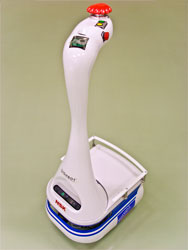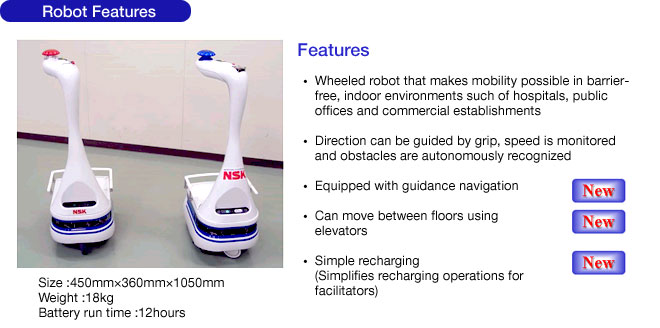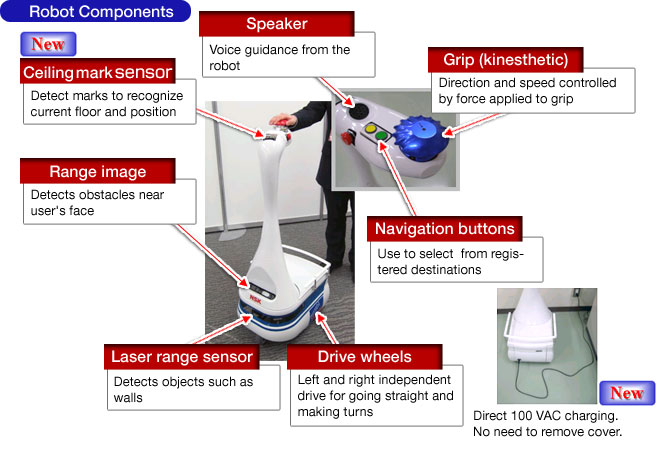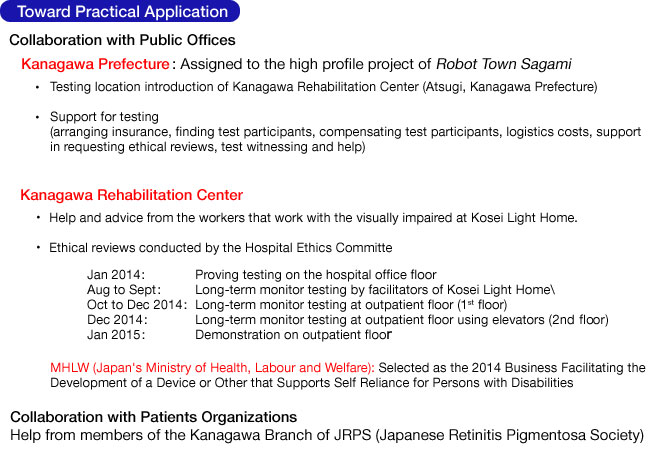
NSK Ltd. (NSK; Headquarters: Tokyo, Japan; President and CEO: Norio Otsuka) today announced that it has completed experimental demonstrations of its autonomous guide robot that is equipped with indoor navigation and obstacle avoidance.
While LIGHBOT is still in the experimental stage, NSK has been working jointly with the Kanagawa Rehabilitation Center (Atsugi, Kanagawa Prefecture) over the past six months under conditions close to those of actual usage.
This latest version has improved guidance, safety and usability compared to the version that NSK demonstrated at iREX 2013 (International Robot Exhibition). NSK will apply the knowledge obtained through this latest round of experimental demonstrations to solve remaining issues in preparation for the introduction and practical application of LIGHBOT in 2016.
NSK had previously developed a wheeled robot that could detect the desired direction as well as automatically avoid obstacles along the corresponding path. This technology can be applied in place of guide dogs for improving mobility assistance devices for the elderly and others.
The robot that NSK developed in 2013 was capable of moving to locations registered in advance by users and was also capable of estimating its own location based on map information and distance traveled. It could also detect obstacles and provide voice guidance to the destination. Since that time, NSK has made many improvements through various rounds of experimentation. This latest robot has greatly increased handling and can safely guide users to destinations in a wide variety of buildings such as hospitals and government offices, even when the user is visiting such buildings for the first time.



